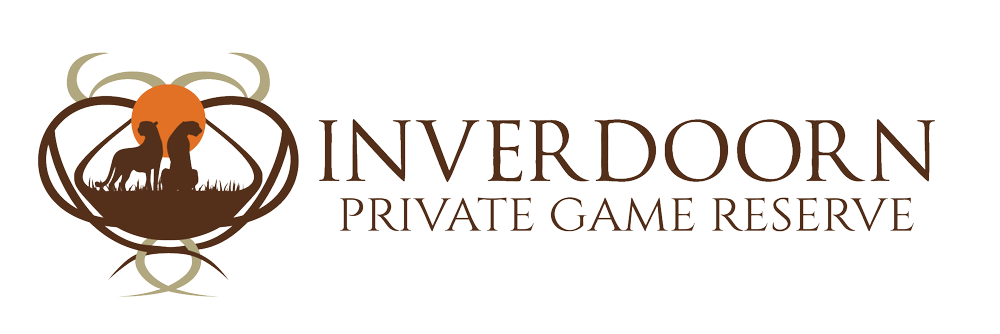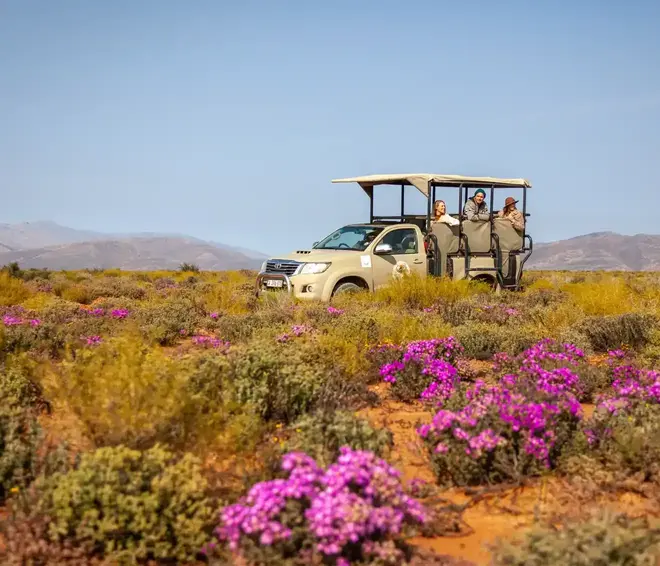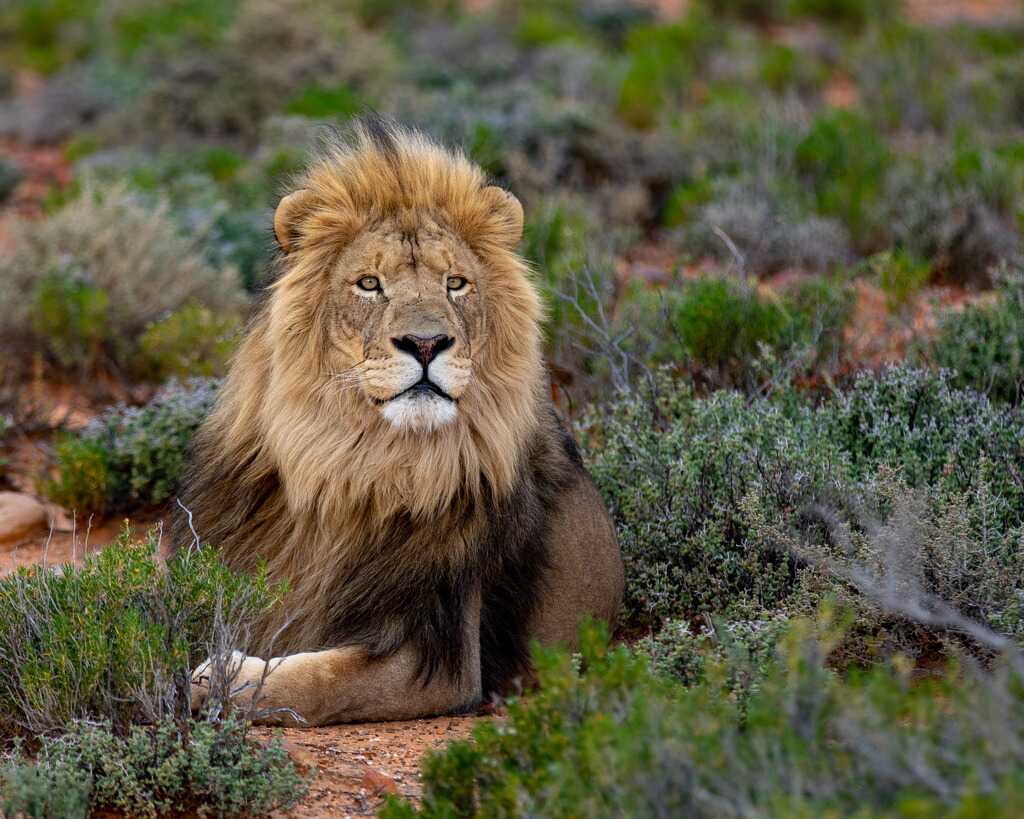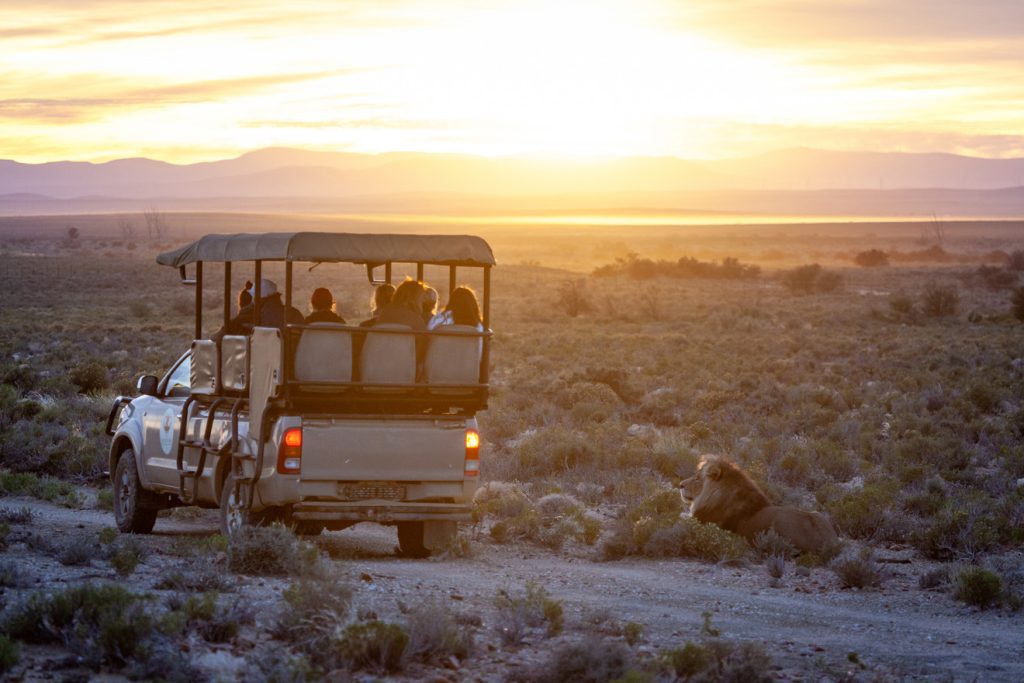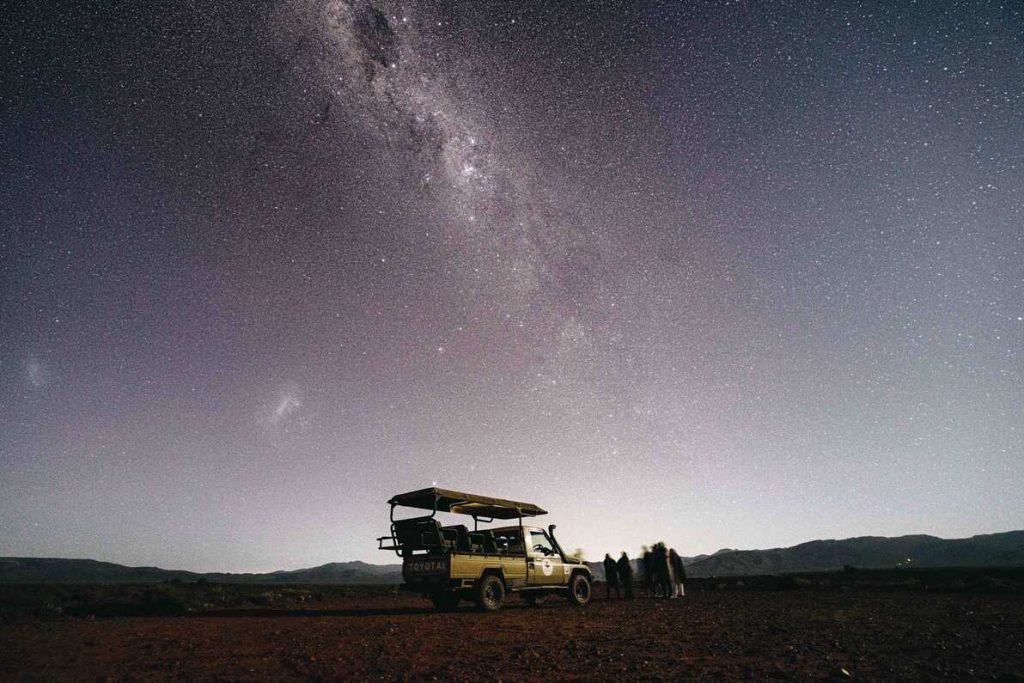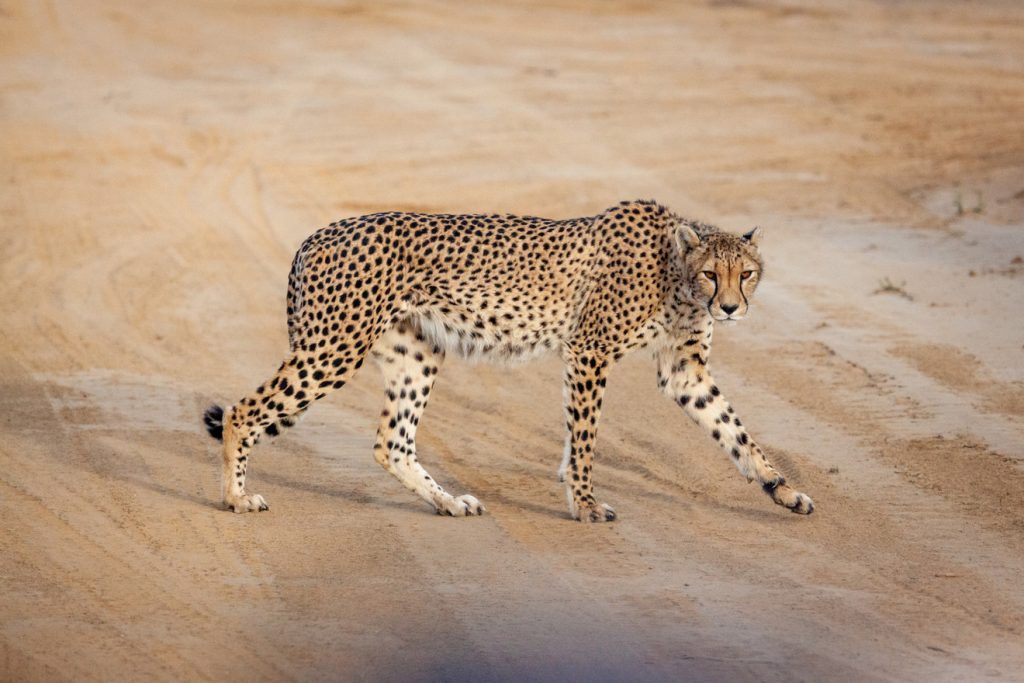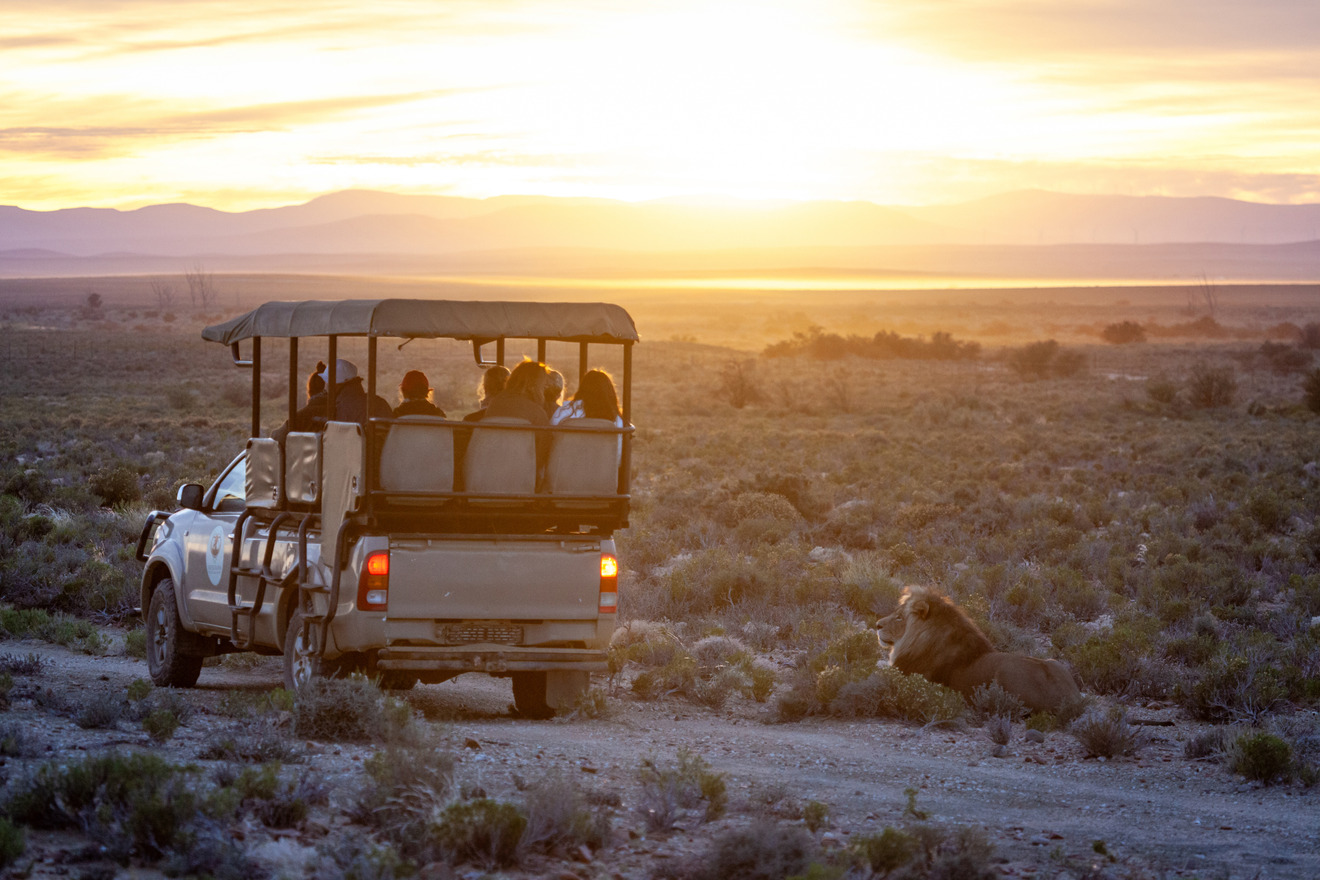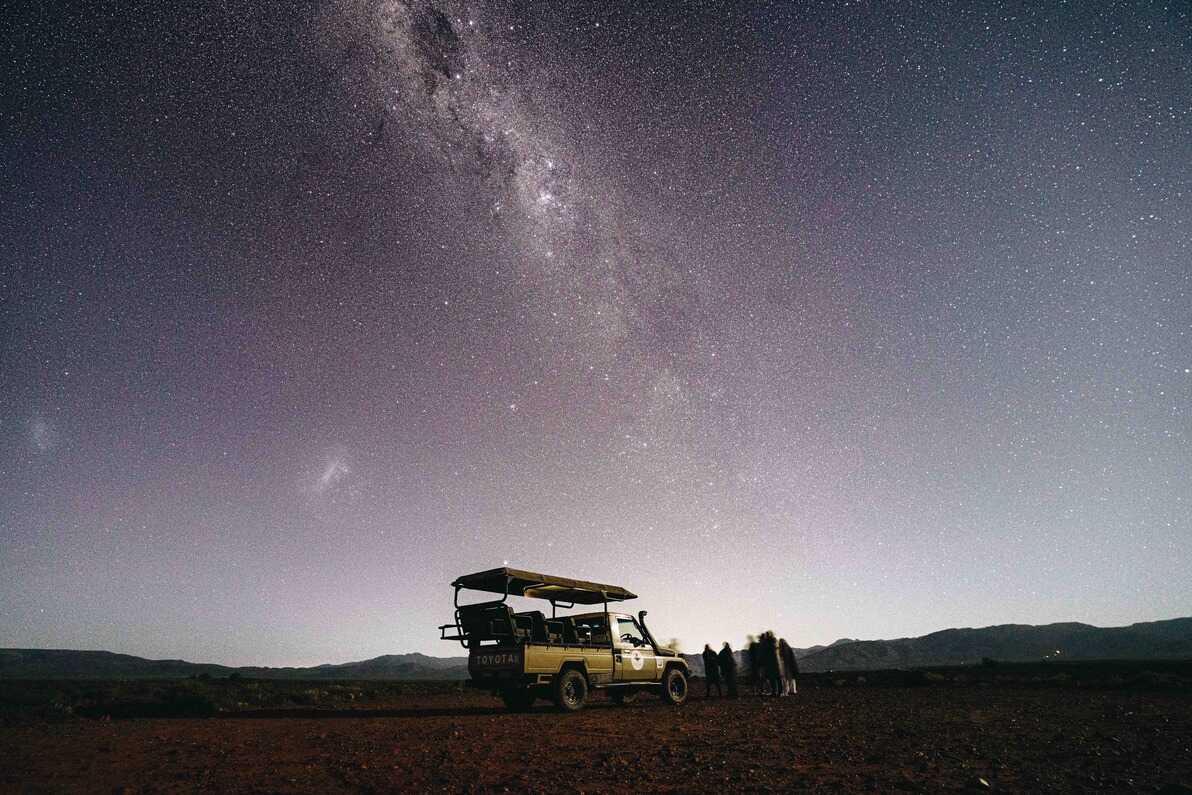The history of Inverdoorn is a testament to the deep connection between the land, the local community, and the native wildlife in the Tankwa Karoo. Today, Inverdoorn Private Game Reserve is celebrated as one of the Western Cape’s top Big Five safari destinations.
However, the reserve’s journey from a colonial-era farm to a thriving wildlife sanctuary tells a remarkable story of transformation and commitment to preserving South Africa’s natural heritage. It might be hard to believe, but long before this 10,000-hectare reserve became a sanctuary for South Africa’s iconic Big Five—lions, leopards, buffalo, elephants, and rhinos—Inverdoorn began its life as a modest citrus and fruit farm.
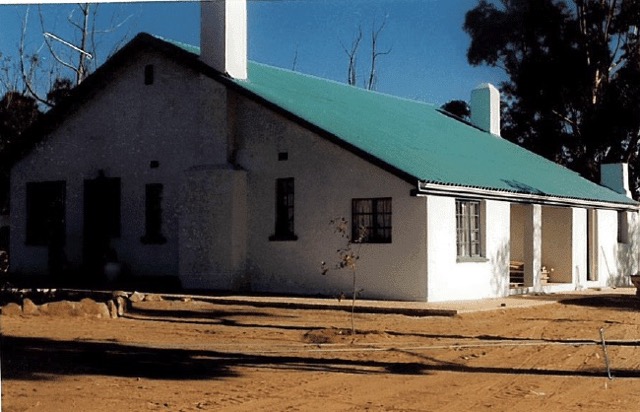

From Fruit Farm to Western Cape Game Reserve
Originally founded by French and Dutch settlers, Inverdoorn was a family-owned farm that, more than a century ago, was formally established as a fruit farm in 1907. By 1915, Inverdoorn had earned the title of the Southern Hemisphere’s largest fruit farm—a position it held until 1972. Orchards of apricots, peaches, and plums once flourished in the Tankwa Karoo soil, a surprising oasis of productivity and life bordering the Great Karoo.
However, as the years passed, the farm began to evolve. By the 1970s, as global markets shifted and environmental awareness grew, the focus at Inverdoorn started to move away from agriculture. What had once been a hub of fruit production in the Western Cape slowly transformed into something quite extraordinary—a private nature reserve dedicated to the protection of South Africa’s natural wildlife.
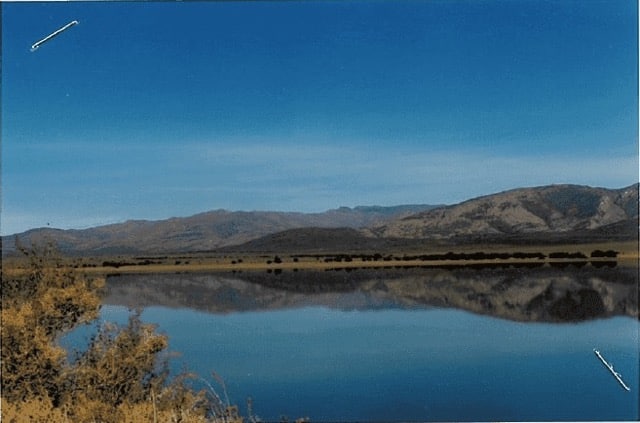

In the last two decades, Inverdoorn has gone through a complete transformation. Native trees were encouraged to grow again, Karoo shrubs and fynbos veld vegetation began to transform the landscape once more, birds returned to the area, the rivers and stream beds flowed in the spring, and large-scale land regeneration initiatives were implemented throughout the area.
Life began to blossom once more. From the beautiful wild flowers and endless grasslands, to the herds of grazing antelope and nutrient-rich compost naturally created by the animal droppings, Inverdoorn Private Game Reserve’s story was just beginning.
Also Read: About Inverdoorn Private Game Reserve

Embracing Wildlife Conservation in South Africa
Following a century of unchecked colonial hunting, numerous wars, and the large-scale acquisition of land, South Africa went through a progressive movement towards wildlife conservation and habitat restoration in the 1900s. Seen as an affordable and interactive holiday opportunity, it was a time when National Parks began to see an increase in wildlife tourism and recreational travel.
The world was changing and seeking a deeper connection with nature. The rise of car ownership and the post-war ‘economic boom’ meant that Families in South Africa (and many Western nations) were turning towards national parks and nature reserves for weekend getaways or camping trips. Wildlife conservation and the ability to see large wild animals like the “Big Five” in their natural habitat slowly became a cornerstone of travel and tourism in South Africa.
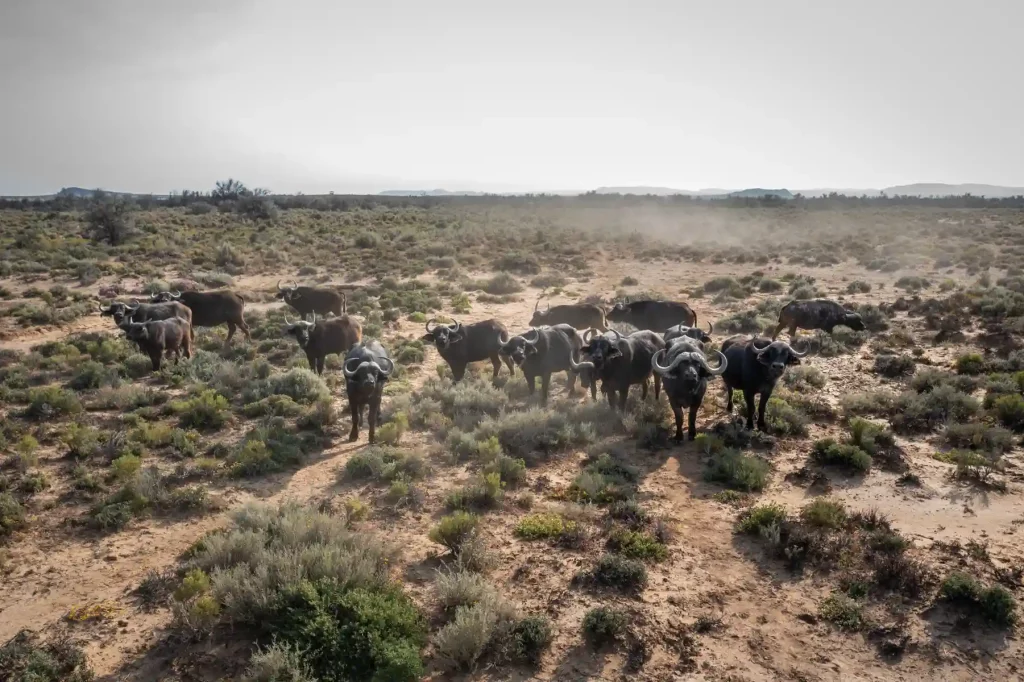
From establishing South Africa’s first National Safari Park in 1926, to setting new international standards for wildlife conservation with the success of Kwa-Zulu Natal’s Southern White Rhino breeding project — which oversaw the return of South Africa’s white rhino population from the brink of extinction and the reintroduced of the first White Rhino to Kruger National Park in the 1960s, game reserves and environmental awareness continued to grow and establish protected wildlife areas throughout the country.
It was within this context of growing environmental consciousness that Inverdoorn began its transformation from farmland to Big Five game reserve.
A Turning Point: Inverdoorn’s Karoo Cheetah Conservation Efforts
The creation of Inverdoorn Private Game Reserve also marked the beginning of a new era for the Western Cape’s native wildlife, but the journey was not without its challenges. Large, free-roaming game like Eland, Giraffe, Buffalo, Zebras, Ostriches and Springbok were dotted throughout the terrain, but the impressive herds, top predators and power-grazers (elephants and rhinos) had not yet been reintroduced.
While Inverdoorn was originally established as a nature-based game reserve, focused on restoring the natural beauty of the Tankwa Karoo’s natural landscapes, one of the reserve’s early conservation initiatives was a cheetah breeding project, aimed at protecting this iconic species.
But, as the years rolled on, the project lost sight of its conservation roots, leaning heavily into the profit-driven side of tourism. Captive-bred cheetahs were paraded around for guest entertainment, collars and leads transforming these big cats into mere photo props.
Read: Inverdoorn’s Cheetah Conservation.

In 2019, Inverdoorn underwent its most significant change to date. Under the new ownership of Searl Derman and the Aquila Collection team, Inverdoorn Private Game Reserve was returned to its original purpose — wildlife conservation with integrity.
Just days after taking ownership of the reserve, a strict “no touch” policy and animal welfare ethics committee was implemented with immediate effect. The focus shifted back to ethical wildlife care, where the well-being of the animals took precedence over tourist attractions.
Today, the cheetah conservation programme, with its responsible and ethical format, offers an engaging guest experience, providing valuable community involvement within Inverdoorn’s rehabilitation initiatives while also providing vital cheetah educational opportunities for guests on safari.
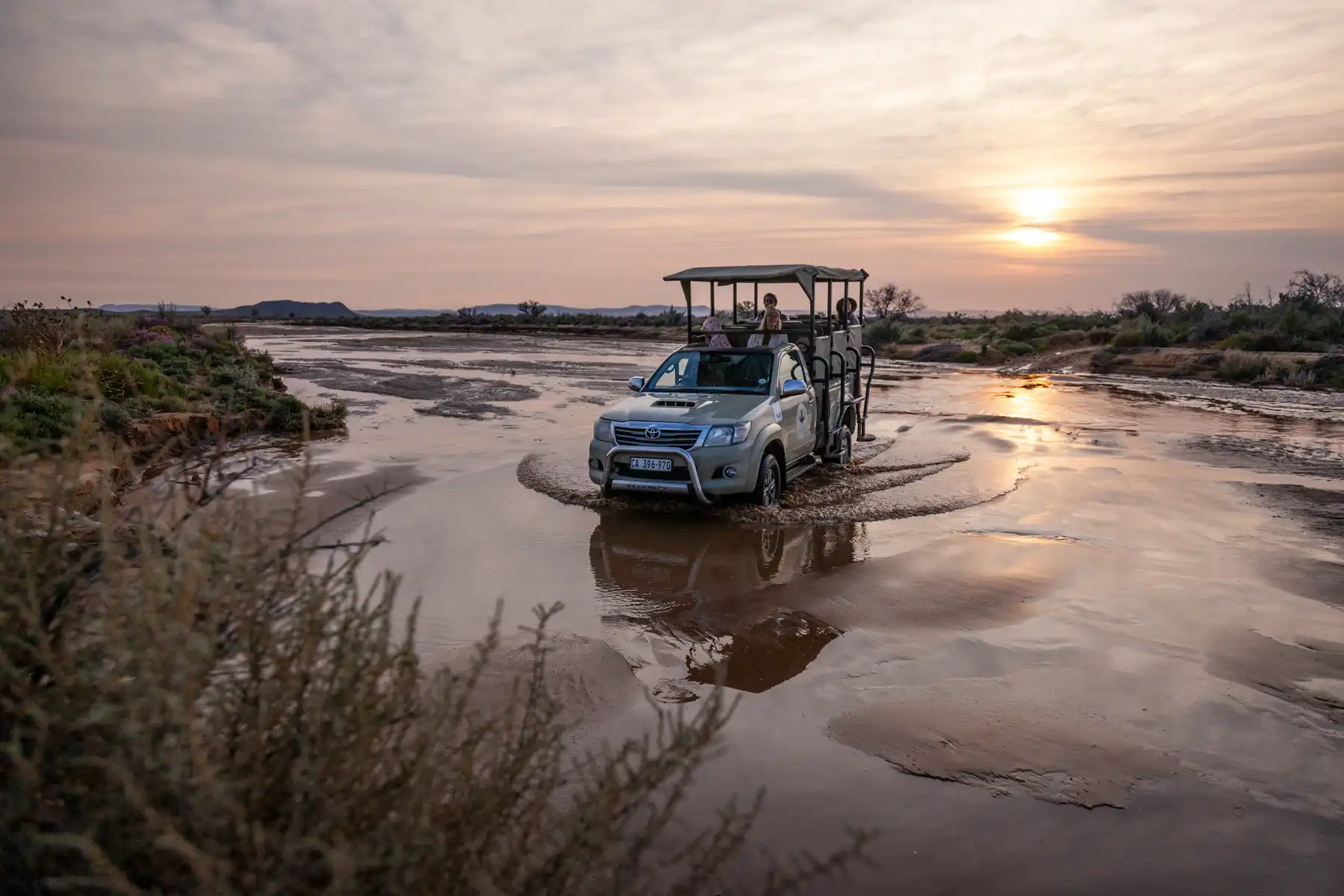
Staying true to the reserve’s core focus, Inverdoorn’s current cheetah conservation programme’s ongoing efforts are working releasing all the reserve’s captive-bred and rescued cheetahs back to the wild.
In partnership with the Animal Rescue Centre (ARC), Inverdoorn is also home to one of the leading wildlife rescue teams in South Africa. From rescuing and rehabilitating injured cheetahs and providing a natural habitat for cage-reared lions rescued from the canned hunting industry, to providing a home to elephants in over-populated reserves around Southern Africa, the reserve has become a true wildlife sanctuary in the Western Cape.

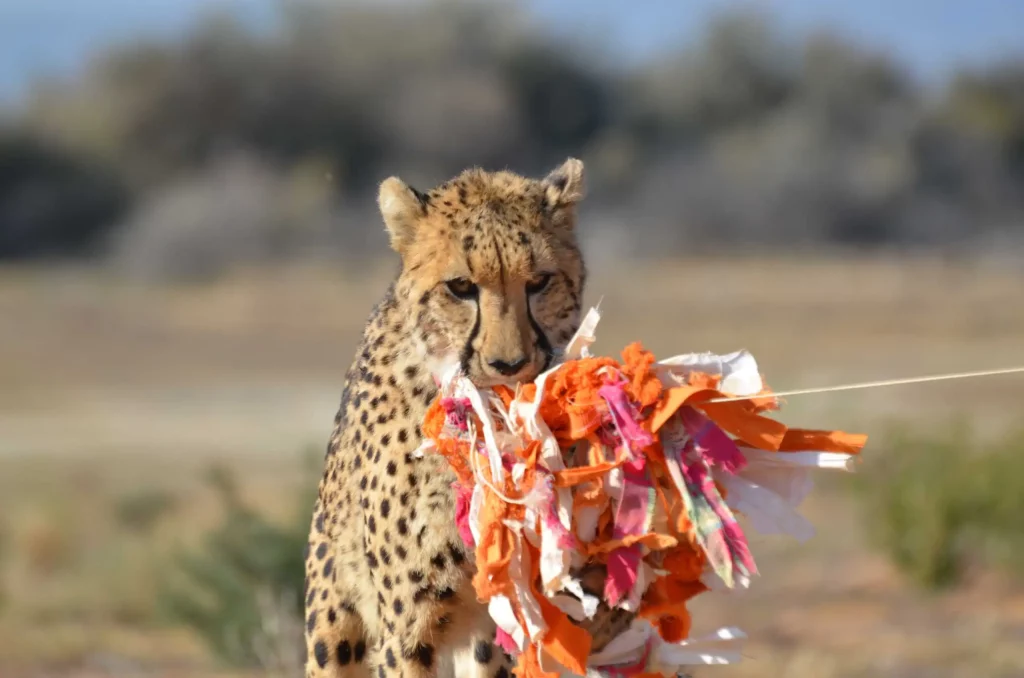
Becoming a Big Five Game Reserve
In 2024, Inverdoorn Private Game Reserve is an example of modern conservation practices and ethical tourism in South Africa, where visitors can witness the beauty of Africa’s Big Five—lions, elephants, leopards, buffalo, and rhinoceros—in their natural habitat while contributing towards the preservation of the land, community, and wildlife.
The reserve’s commitment to conservation is evident not only in its wildlife protection efforts but also in its sustainable practices. Most of the vegetables served at the lodge are still grown on the reserve, a nod to its agricultural past and a commitment to self-sustainability.
Guests who visit Inverdoorn are treated to more than just a safari; they are invited to be part of a conservation story that spans over a hundred years. The reserve offers a tranquil escape into the wild, where the nights are filled with the brilliance of Karoo stars and the days are spent exploring the country’s untamed landscapes, only 2.5 outside of Cape Town.
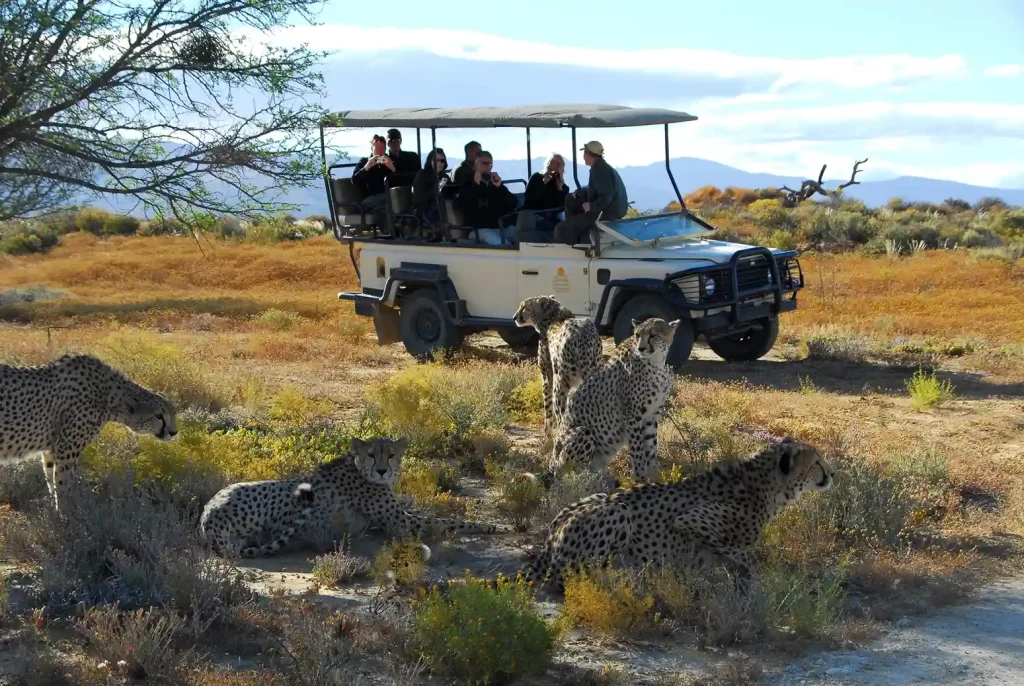
The History of Inverdoorn Private Game Reserve
Inverdoorn’s history is one of transformation against all odds—from a fruitful farm to a sanctuary for some of the world’s most magnificent creatures. It’s a reminder that with passion and purpose, even the most unexpected habitats can be restored to their natural splendour.
The reserve has since became not just a place for South Africa’s wild animals to thrive, but a place where visitors are invited to experience the beauty of a Cape Town safari close to the city, and where the local community can create jobs or support their families off the natural abundance of the land.
Take advantage of Inverdoorn’s latest safari specials or check out our luxurious safari lodge accommodations to book your stay with us now!
